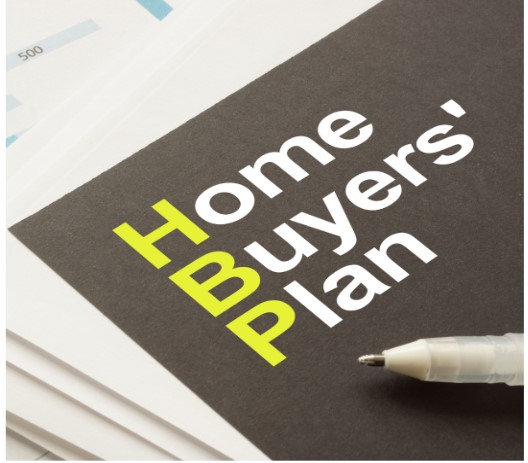Are you feeling the thrill of a new adventure as you prepare to purchase your first home? Jenga Homes’s comprehensive guide will help you navigate each crucial step, turning your dream of homeownership into a reality. This guide covers everything from assessing your borrowing capacity to obtaining a mortgage loan, ensuring a smooth and informed homebuying process.
7 Steps to Preparing a Budget for Homeownership
1. Assess Your Borrowing Capacity
Start by estimating the mortgage loan amount you qualify for, laying the foundation for your home purchase. This step is similar to perusing a menu before dining out – understanding your financial capacity ensures a well-controlled budget.
Determining Your Borrowing Capacity
– Consult your advisor for a thorough financial analysis.
– Utilize the online calculator for a quick estimation.
– Consider mortgage payments within your budget, leaving room for additional home-related expenses.
2. Determine Your Down Payment
Calculate your down payment, a crucial element in reducing your loan amount and associated interest. Did you know that the minimum down payment for a property can vary depending on its price?
It’s important to know the following information as you start your home-buying journey.
The Canada Mortgage and Housing Corporation (CMHC) is a Crown corporation of the Government of Canada that provides information and advice to Canadians on housing issues, including the minimum down payment requirements for mortgages.
When it comes to buying a house in Canada, the down payment required can vary based on the price of the property.
For homes priced under $500,000, the minimum down payment is 5%. For homes that are valued to cost between $500,000 and $1 million, the minimum down payment is 10%. The minimum down payment for homes over $1 million is 20%.
The purpose of requiring a down payment is to safeguard lenders from the risk of borrower default. If they default, the lender can sell the property to recover their losses.
However, if the borrower has a small down payment, the lender may not be able to recoup their losses if the property value has declined.
By requiring a larger down payment, lenders can reduce the risk of default and protect themselves from financial losses. This, in turn, helps to keep mortgage interest rates low for all borrowers.
For more information about down payment requirements, visit CMHC.
Down Payment Options
– Use cash from your bank accounts.
– Grow your down payment through systematic savings plans.
– Consider gifts or utilize your FHSA or RRSP.

Understanding the RRSP and FHSA for Down Payments:
RRSP (Registered Retirement Savings Plan)
An RRSP is a retirement savings plan that allows Canadians to save for their retirement on a tax-deferred basis. This means that you will only have to pay taxes on your contributions once you withdraw them in retirement.
The RRSP Home Buyers’ Plan (HBP) allows you to withdraw a maximum of $35,000 from your RRSP as a down payment on your first home. You have up to 15 years to repay the borrowed funds and don’t have to pay any taxes on the withdrawals.
FHSA (First Home Savings Account)
An FHSA is a relatively new type of savings account introduced in 2019. It is specifically designed for first-time homebuyers and offers several advantages over an RRSP.
- Contributions are tax-deductible: As with an RRSP, contributions to an FHSA are tax-deductible. This means you can save money in your taxes by deducting your contributions from your taxable income.
- Withdrawals are tax-free: Unlike withdrawals from an RRSP, withdrawals from an FHSA are tax-free. This means that you won’t have to pay any taxes on the money you withdraw, even if you use it to buy a home.
- No repayment requirement: There is no requirement to repay withdrawals from an FHSA. This means you can keep the money you withdraw tax-free, even if you don’t use it to buy a home.
Which One is Right for You?
The best way to decide whether to use an RRSP or an FHSA to save for a down payment is to talk to a financial advisor. They can assess your situation and recommend options.
Here is a table summarizing the key differences between RRSPs and FHSAs for down payments:
| Feature | RRSP | FHSA |
| Contributions | Tax-deductible | Tax-deductible |
| Withdrawals | Taxable | Tax-free |
| Repayment requirement | Yes | No |
3. Request Mortgage Pre-Approval
Gain a clear understanding of your borrowing capacity by securing mortgage pre-approval. This step enhances your credibility, negotiating power, and advantage over other non-pre-approved buyers.
Benefits of Mortgage Pre-Approval
– Proves credibility to sellers.
– Enhances negotiating power.
– Provides an advantage over non-pre-approved buyers.
How to Get Pre-Approved
Getting pre-approved for a mortgage is an important step in the homebuying process. It helps you determine how much you can afford to borrow and gives you a better understanding of your budget.
What is Mortgage Pre-Approval?
Mortgage pre-approval is a process where a lender assesses your financial situation and determines the maximum amount you can borrow for a mortgage. This is based on your income, debt-to-income ratio, credit score, and down payment.
Why is it important to get pre-approved for a mortgage?
There are several reasons why getting pre-approved for a mortgage is important before you start shopping for a home.
- It will help you determine how much you can afford to borrow. This will help you narrow your search to homes that are within your price range.
- It will make you a more attractive buyer to sellers. Sellers know that pre-approved buyers are more likely to be able to close on a purchase.
- Knowing that you have financing in place will give you peace of mind. This will take the stress out of the homebuying process.
How to Get Pre-Approved for a Mortgage
To get pre-approved for a mortgage, you will need to provide a lender with some information about your financial situation, including your:
- Income: You will need to provide proof of your income, such as pay stubs or tax returns.
- Debt-to-income ratio: This is the percentage of your gross monthly income that goes towards your debt payments. Lenders typically want your debt-to-income ratio to be below 43%.
- Credit score: Your credit score is a measure of your creditworthiness. Lenders will use your credit score to determine the interest rate you will be offered on your mortgage.
- Down payment: The amount of money you are willing to put down on a home as a cash payment. The minimum down payment required in Canada is 5%.
What to Expect When you Get Pre-Approved
Once you have provided a lender with your financial information, they will review it and make a decision about whether or not to pre-approve you for a mortgage. If you are pre-approved, the lender will give you a pre-approval letter that states the maximum amount you can borrow.
Tips for Getting Pre-Approved for a Mortgage
Here are a few tips for getting pre-approved for a mortgage:
- Shop around for the best interest rate.
- Get pre-approved from multiple lenders.
- Make sure you have all of your financial documentation in order.
- Be honest with your lender about your financial situation.
- Only make major purchases or take on any new debt after you get pre-approved.
Getting pre-approved for a mortgage is an important step in the homebuying process. It can help you save money, make you a more attractive buyer to sellers, and give you peace of mind.
4. Plan for Additional Costs
Beyond mortgage and down payments, be prepared for additional costs like legal fees. Experts recommend setting aside 2-3% of the house value for these expenses.
5. Find Your Home
Identify your needs and preferences before beginning your home search. Understanding your criteria is crucial for a successful home purchase.
Considerations for Home Selection
– Area, neighborhood, or town of interest.
– Type of home (single-family, condo, duplex).
– Important features of a home.
– Short-term costs (landscaping, renovations).
Visit our resources page for a variety of Free Checklists to use in your home buying process.
6. Make Your Offer
Craft a comprehensive promise or offer to purchase with the necessary details for a successful sale closure. Be prepared to adjust your offer based on seller counter-offers.
Offer Details
– Purchase price.
– Ownership transfer date.
– Items included or excluded from the transaction.
– Terms and conditions (e.g., inspection).
7. Take Out a Mortgage Loan
Finalize the homebuying process with a mortgage loan application. Your advisor will guide you through the financing options, including interest rates, loan terms, and amortization.
The Key Elements to Consider in Your Loan
– Type of interest rate (fixed or variable).
– Loan term.
– Amortization period.
Financing Application Process
– Gather required documents and information.
– Confirm property value.
– Obtain financing approval.
– Register property ownership transfer.
– Sign legal documents to complete the purchase.
Frequently Asked Questions
Q: How can I determine my borrowing capacity?
A: Consult your advisor, use the online calculator, and consider mortgage payments within your budget.
Q: What are the down payment options?
A: You can use cash, grow your down payment through savings plans, consider gifts, or utilize your FHSA or RRSP.
Q: How do I get mortgage pre-approval?
A: Apply online or request pre-approval from your advisor.
Q: What additional costs should I plan for?
A: Plan for legal fees and stay informed by signing up for newsletters.
Q: What factors should I consider when finding a home?
A: Consider the area, type of home, important features, and short-term costs.
Q: How do I make a comprehensive offer?
A: Craft a detailed promise to purchase, including price, transfer date, items, and terms.
Q: What is the process for taking out a mortgage loan?
A: Consult your advisor, gather required documents, confirm property value, obtain financing approval, and sign legal documents.
Final Take Away
You’re now ready to kickstart the process of purchasing your first home. Contact our brokerage firm, Ace Realty, for available Jenga Homes’ new homes in Calgary by calling 403-472-3909 today! Our experts can help you take the next step toward homeownership.





